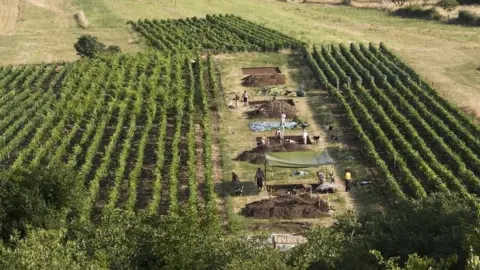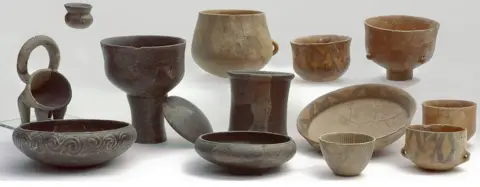Traces found of 'world's oldest cheese'
 DaniloFamily
DaniloFamilyScientists have found traces of what they believe is the world's oldest cheese.
It was made 7,000 years ago in what is now Croatia.
An international team, including Heriot-Watt university researchers, say it led to the transformation of Europe.
It is neither a sturdy cheddar nor a cheeky brie, rather some traces of fatty acids found on fragments of pottery from an archaeological site at Pokrovnik on the Dalmatian coast.
But it is enough for the researchers from Heriot-Watt in Edinburgh and Pennsylvania State universities, Rochester Institute of Technology, and the Šibenik City Museum to conclude the sieve-like pottery objects were used for straining curds out of whey to make cheese.
Traces of ancient milk fats have been found before but the new study has used carbon dating to produce a definitive chemical diagnosis that the Pokrovnik samples are from the cheese making process.
The team says their discovery means humans were making cheese 2,000 years earlier than previously thought, pushing the date back from the Bronze Age to the Neolithic era.
Cheese making was a breakthrough technology which transformed humanity.
More portable and longer lasting than liquid milk, it enabled early farming to spread into cooler central and northern areas.
 Tomislav Smider
Tomislav SmiderDr Clayton Magill, a research fellow at the Heriot-Watt's Lyell Centre, says the discovery is both astounding and delightful.
'Reduced infant mortality'
He is sure cheese lovers everywhere will be interested to find out more about the origins and antiquity of their cheese.
"We know that the consumption of milk and dairy products would have had many advantages for early farming populations because milk, yogurt and cheese are a good source of calories, protein and fat," Dr Magill said.
"They could have even been reliable food between harvests or during droughts and famines."
Previous archaeological finds have offered tantalising clues that humans made cheese in the New Stone Age.
Some Neolithic objects have been tentatively identified as strainers or cheese graters but this is the first direct evidence that milk was being fermented.
Pennsylvania State's associate professor of anthropology Dr Sarah McClure says that while young children of the era could drink milk, many adult farmers were lactose intolerant.
Cheese changed that because adults could digest it.
"We suggest that milk and cheese production among Europe's early farmers reduced infant mortality," Dr McClure says, "and helped stimulate demographic shifts that propelled farming communities to expand to northern latitudes."
How cheese was first produced is lost in prehistory. One theory is that before pottery vessels were developed, milk was stored in bladders made from animals' stomachs. The rennet in the skins would have reacted with the milk to create curds and whey.
